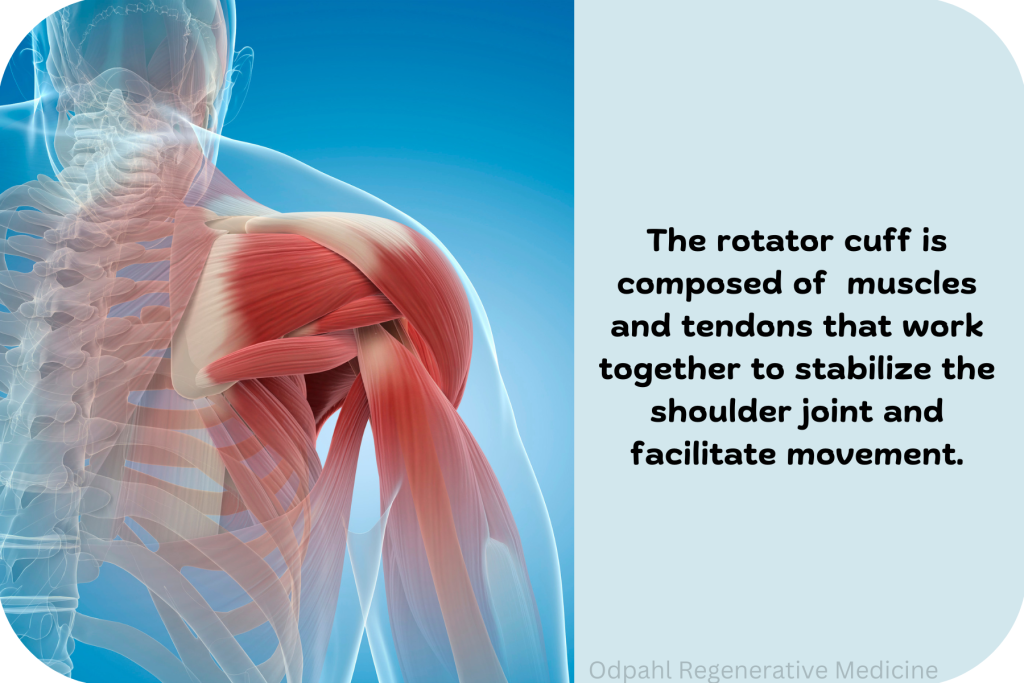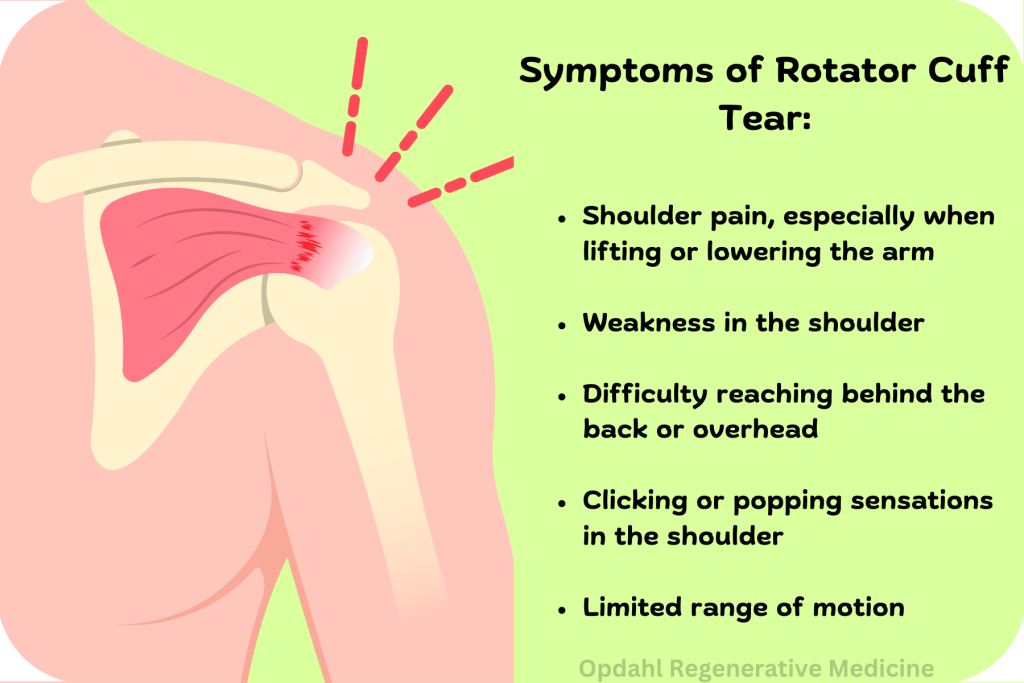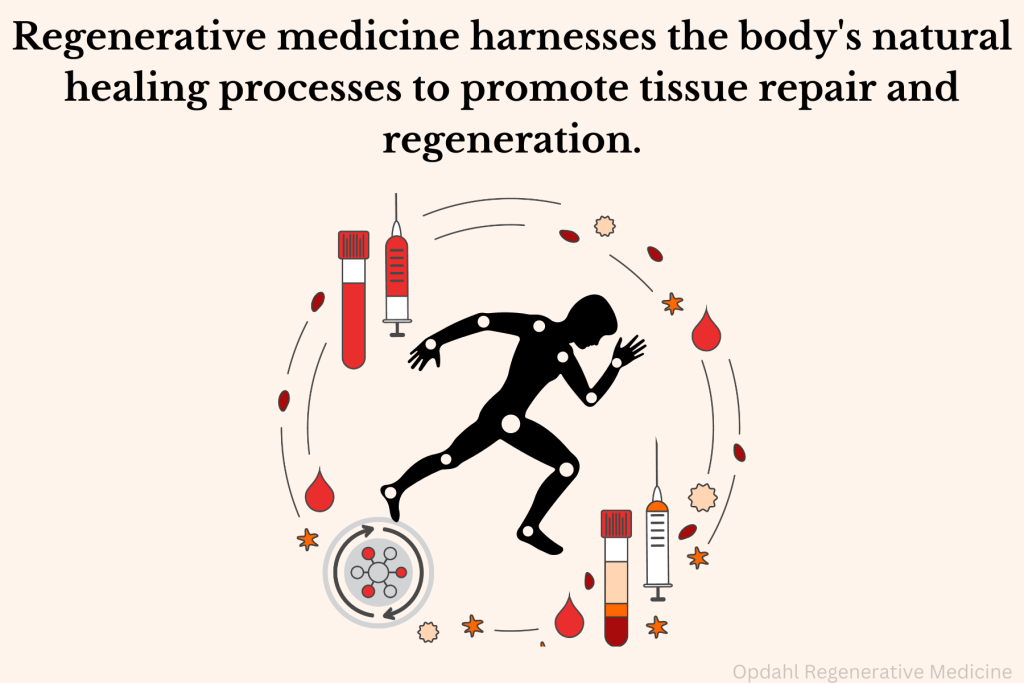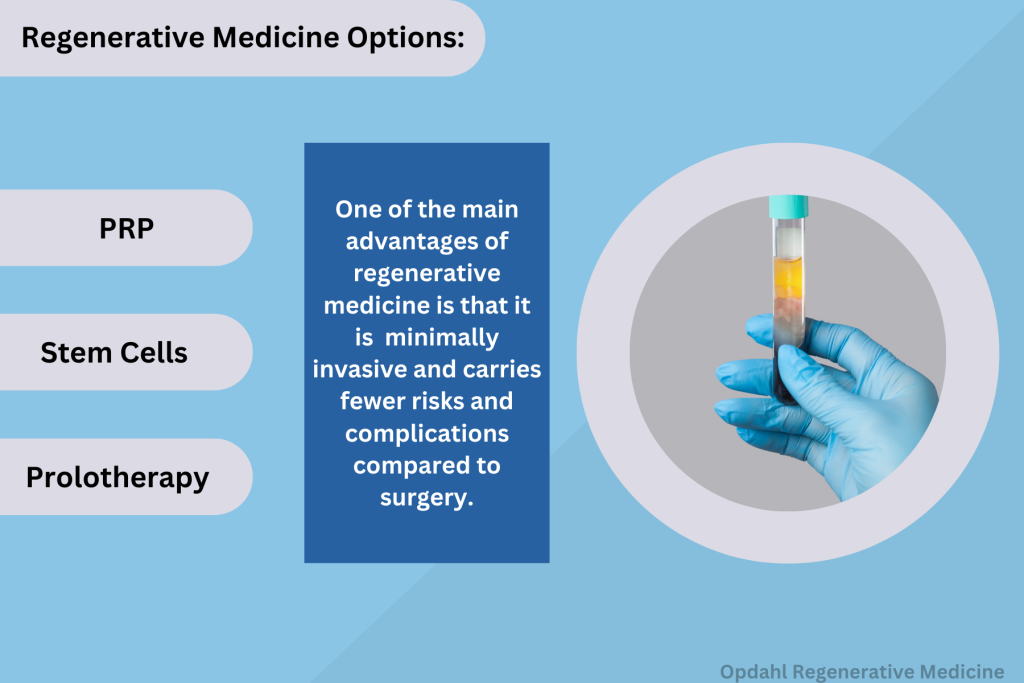Rotator cuff injuries are a common source of shoulder pain, affecting millions of people worldwide. Whether you’re an athlete, a manual laborer, or someone who simply enjoys an active lifestyle, a rotator cuff tear can significantly impact your daily activities and quality of life. One of the most pressing questions individuals face upon diagnosis is whether surgery is necessary to address the issue. In this blog post, we’ll delve into the complexities of rotator cuff tears and explore when surgery might be warranted.
Anatomy of a Rotator Cuff:
Before diving into the question of surgery, it is important to understand rotator cuff tears and how various treatment options work. It’s essential to grasp the anatomy of the rotator cuff itself. The rotator cuff is composed of four muscles and their associated tendons that work together to stabilize the shoulder joint and facilitate movement.
Breaking Down the Components:
- Supraspinatus Muscle and Tendon: Located on the top of the shoulder blade (scapula), the supraspinatus muscle plays a crucial role in initiating the abduction (lifting) of the arm.
- Infraspinatus Muscle and Tendon: Situated on the back of the scapula below the spine, the infraspinatus muscle assists in external rotation and stabilization of the shoulder joint.
- Teres Minor Muscle and Tendon: Found beneath the infraspinatus muscle, the teres minor muscle aids in external rotation and stabilization of the shoulder.
- Subscapularis Muscle and Tendon: Located on the front of the scapula, the subscapularis muscle is responsible for internal rotation and stabilization of the shoulder.

These four muscles and tendons work synergistically to provide stability to the shoulder joint and facilitate a wide range of motion. However, their location and constant use make them susceptible to injury, particularly in individuals who engage in repetitive overhead activities or experience trauma to the shoulder.
Rotator cuff tears can occur within any of these tendons, ranging from partial thickness tears involving only a portion of the tendon to full-thickness tears that extend through the entire thickness of the tendon. The location and severity of the tear will influence symptoms and treatment options, highlighting the importance of a thorough evaluation by a healthcare professional.
Causes of Rotator Cuff Tears:
Rotator cuff tears can occur suddenly due to a traumatic injury, such as a fall or lifting a heavy object, or develop gradually over time due to wear and tear. Common causes include repetitive overhead movements (such as those performed in sports like baseball or tennis), degeneration of the tendons due to aging, and poor posture.
Symptoms of a Rotator Cuff Tear:
The symptoms of a rotator cuff tear can vary depending on the severity of the injury but often include:
- Shoulder pain, especially when lifting or lowering the arm
- Weakness in the shoulder
- Difficulty reaching behind the back or overhead
- Clicking or popping sensations in the shoulder
- Limited range of motion

Conservative Treatment Options:
In many cases, conservative treatments may be sufficient to manage the symptoms of a rotator cuff tear and promote healing. These treatments may include:
- Rest: Avoiding activities that exacerbate symptoms and allowing the shoulder time to heal.
- Physical Therapy: Strengthening exercises and stretches to improve shoulder stability and range of motion.
- Pain Management: Nonsteroidal anti-inflammatory drugs (NSAIDs), corticosteroid injections, or other pain-relieving medications.
- Lifestyle Modifications: Adjusting your daily activities to minimize stress on the shoulder joint.
Can a Torn Rotator Cuff Heal on Its Own?
Without actively making an effort, rotator cuff tears do not have the ability to heal on their own. Nevertheless, non-surgical treatments and surgical options exist to increase the likelihood of getting the maximum recovery and pain relief. The existence of a tear does not automatically require surgery, and it has been observed that around 80% of individuals with partial tears experience improvement through nonsurgical treatments. However, recovery can be a lengthy process that can take up to a year to show progress.
Do I Need Surgery?
Now, let’s address the million-dollar question: do you need surgery for a rotator cuff tear? The answer is not always straightforward. The answer depends on several factors, including the severity of the tear, your age, activity level, and overall health.
When Surgery May Be Necessary:
While conservative treatments are often effective, surgery may be recommended in certain situations, such as:
Large Tears: If the tear is significant and affecting your ability to perform daily activities or participate in sports.
Failed Conservative Treatment: If conservative measures have been unsuccessful in relieving symptoms or improving shoulder function.
Active Individuals: For individuals who require a quicker recovery to return to their work or hobbies.
Younger Patients: Surgery may be recommended for younger patients to prevent degeneration of the shoulder joint over time.
Risks and Complications of Rotator Cuff Surgery:
Rotator cuff surgery is a common procedure, but it carries some risks and complications, including:
- Infection
- Blood clots
- Nerve damage
- Stiffness or loss of motion
- Failure to heal or re-tear of the rotator cuff
Regenerative Medicine: An Alternative to Surgery
Regenerative medicine techniques such as PRP have emerged as promising alternatives to surgery for treating rotator cuff tears. These approaches harness the body’s natural healing processes to promote tissue repair and regeneration. This can allow individuals to avoid invasive surgical procedures.

What is PRP?
PRP therapy involves extracting a small sample of the patient’s blood and processing it to concentrate the platelets. Platelets contain growth factors and other bioactive proteins essential for tissue repair. The concentrated PRP is injected directly into the site of the rotator cuff tear. Once injected, PRP stimulates the body’s natural healing response and accelerates tissue regeneration.
Studies have shown that PRP therapy can be effective in reducing pain, improving shoulder function, and promoting healing in patients with rotator cuff tears. By delivering a high concentration of growth factors directly to the injured tissue, PRP can enhance the body’s ability to repair the torn tendons and restore normal shoulder function.
Is PRP the Only Regenerative Medicine Option?
In addition to PRP therapy, other regenerative medicine techniques such as stem cell therapy and prolotherapy may also be beneficial for treating rotator cuff tears. Stem cell therapy involves injecting stem cells derived from the patient’s own body or from donor sources into the injured tissue, where they can differentiate into various cell types and promote tissue regeneration.
Prolotherapy, on the other hand, involves injecting a solution (often containing dextrose or other irritants) into the site of the tear to stimulate inflammation and trigger the body’s natural healing response. While more research is needed to fully understand the efficacy of these treatments for rotator cuff tears, many patients have reported significant improvements in pain and function after undergoing regenerative medicine procedures.

Advantages of Regenerative Medicine for Rotator Cuff Tear:
One of the main advantages of PRP therapy and other regenerative medicine techniques is that they are minimally invasive and carry fewer risks and complications compared to surgery. Since these treatments utilize the body’s own healing mechanisms, they also have the potential to provide long-lasting relief and reduce the likelihood of recurrent tears.
However, it’s essential to note that not all rotator cuff tears are suitable for PRP therapy or regenerative medicine. The size and severity of the tear, as well as individual factors such as age, overall health, and activity level, will influence the appropriateness of these treatments. It’s crucial to consult with a qualified healthcare provider who can assess your specific situation and recommend the most appropriate treatment approach.
What Should I Do Next?
Ultimately, the decision to undergo surgery should be made in consultation with a qualified healthcare professional. They can assess the severity of the injury, discuss your treatment options, and help you weigh the risks and benefits of surgery versus conservative management. Remember that every case is unique, and what works for one person may not be the best option for another. By taking an informed and proactive approach to your shoulder health, you can work towards getting back to doing the activities you love.
Seeking Professional Advice
In the realm of regenerative medicine, the potential for joint regeneration represents a beacon of hope for millions worldwide. What was once the realm of science fiction is now a tangible reality. As medical professionals push the boundaries , the future looks brighter than ever for those in need of joint repair. However, it is important to always consult with a qualified healthcare professional for personalized information and guidance.
Learn More About Alternative Ways to Alleviate Your Pain
Get back to doing the things you love, faster & without surgery.
Request an Appointment Today!
Sources:
Wang, H., Rong, X., Yang, L., Hua, W., & Ni, G. (n.d.). Advances in Stem Cell Therapies for Rotator Cuff Injuries. Frontiers in Bioengineering and Biotechnology, 10. https://doi.org/10.3389/fbioe.2022.866195